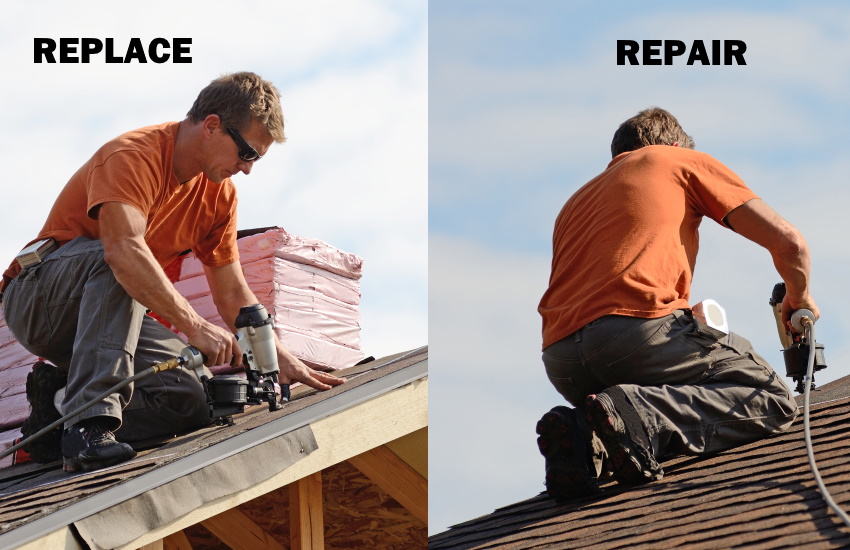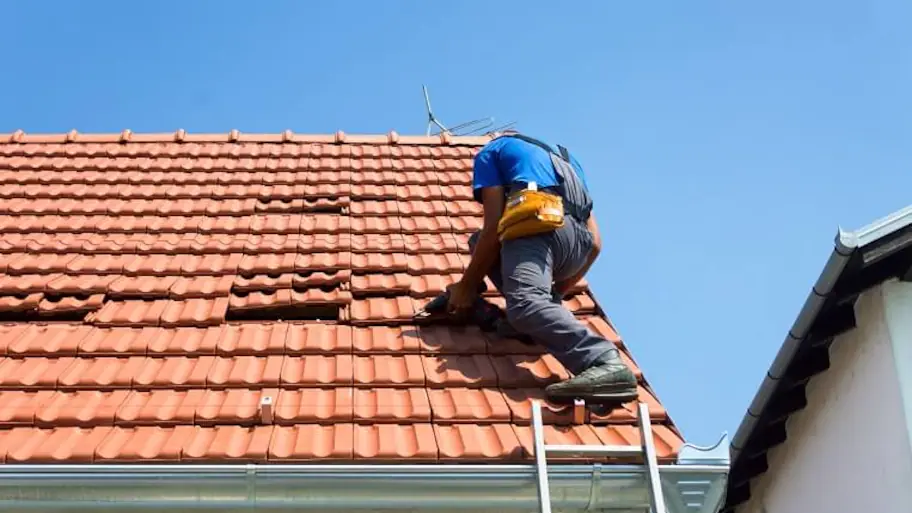Comprehending the Various Kinds Of Roofing Systems: A Comprehensive Guide for Homeowners
With a variety of alternatives-- ranging from the traditional gable to the contemporary level-- each kind provides unique advantages and challenges that need to straighten with the home owner's details needs and ecological considerations. As we discover the intricacies of various roof covering kinds, it ends up being evident that one size does not fit all; the right selection might stun you.
Saddleback Roof
Saddleback roofs, defined by their triangular shape, are amongst one of the most popular roof covering designs because of their simpleness and performance in shedding water and snow. This layout features 2 sloping sides that meet at a ridge, enabling reliable drainage and lessening the danger of water accumulation. The high pitch commonly linked with saddleback roofs enhances their capability to manage hefty rainfall, making them appropriate for different environments.
Along with their sensible advantages, gable roofings use visual convenience. They can be adapted to numerous architectural styles, from standard to modern homes. The layout can likewise suit extra functions such as dormer home windows, which boost all-natural light and ventilation in the attic area.
Moreover, gable roofings supply adequate area for insulation, adding to power efficiency. Property owners can select from a selection of roofing materials, including asphalt tiles, metal, and ceramic tiles, even more boosting modification alternatives.
In spite of their advantages, gable roofs may require additional support in areas susceptible to high winds or hefty snowfall. Generally, the gable roof continues to be a popular choice as a result of its blend of performance, longevity, and aesthetic allure.
Apartment Roofs
Level roofing systems are typically recognized for their minimal style and useful applications, especially in commercial and industrial setups (oahu roofing). These roof coverings include a straight or virtually straight surface area, which enables for simple building and functional room usage. While they may lack the visual appeal of pitched roof coverings, flat roofing systems use countless advantages, particularly in city atmospheres where making best use of area is essential
Among the primary advantages of level roofs is their accessibility. House owners can make use of the roofing space for numerous objectives, such as roof gardens, terraces, or photovoltaic panel setups. Furthermore, flat roofings are generally extra economical to install and preserve compared to their sloped equivalents, as they call for fewer products and labor.
Typical materials utilized for level roofings consist of built-up roof covering (BUR), changed asphalt, and single-ply membrane layers, each offering distinctive advantages. On the whole, level roofs offer as a functional and adaptable selection for many homeowners and businesses alike.
Hip Roofs
Hip roofs are characterized by their sloped sides that converge on top, creating a ridge. This layout is distinctive from saddleback roofs, as all 4 sides of a hip roofing system slope downwards toward the wall surfaces, supplying a much more stable structure. The angle of the slopes can vary, enabling versatility in building aesthetics and functionality.
Among the main advantages of hip roofing systems is their capability to withstand hefty winds and negative climate condition. The sloped surface areas make it possible for much better water drainage, lowering the danger of leaks and water damages. Furthermore, hip roofing systems offer raised attic room space, which can be made use of for storage or even exchanged comfortable locations.
However, Full Report creating a hip roofing can be more pricey and complicated than simpler roofing types, such as gable roof coverings. The extra product and labor included in creating the slopes and ensuring appropriate architectural stability can bring about higher expenditures. In spite of these downsides, numerous home owners favor hip roofings for their resilience, visual appeal, and capacity for power efficiency.
Mansard Roofings
Mansard roofings, frequently acknowledged by their unique four-sided style, function 2 slopes on each side, with the lower incline being steeper than the top. This architectural style, stemming from France in the 17th century, is not just aesthetically appealing however useful, as it optimizes the useful space in the upper floorings of a building. The steep reduced incline permits for more headroom, making it an excellent choice for loft spaces or attic rooms, which can be exchanged living spaces.
Mansard official website roofing systems are defined by their convenience, accommodating various architectural styles, from conventional to contemporary. They can be created with various products, consisting of asphalt tiles, slate, or steel, providing homeowners with a range of choices to fit their preferences and budget plans. Furthermore, the layout permits the integration of dormer windows, enhancing all-natural light and air flow in the top degrees.
Nevertheless, it is vital to consider the possible disadvantages. Mansard roofs might require even more maintenance because of the complexity of their design, and their high inclines can be challenging for snow and rain runoff. On the whole, mansard roof coverings incorporate sophistication with functionality, making them a prominent choice amongst house owners seeking distinctive building functions.
Dropped Roofs
As home owners significantly seek simplicity and capability in their architectural designs, lost roofing systems have arised as a prominent choice. Identified by a single sloping aircraft, a shed roofing presents a minimalist visual that matches different home designs, from contemporary to rustic.
Among the key benefits of a shed roofing system is its simple building and construction, which often equates to lower labor and material prices. This design enables for reliable water drainage, minimizing the risk of leaks and water damages. In addition, the vertical slope gives ample area for skylights, boosting natural light within the interior.
Dropped roof coverings also use convenience in terms of usage. They can be successfully incorporated right into additions, garages, or outdoor structures like sheds and structures. Furthermore, this roofing system style can fit numerous roof covering materials, including metal, asphalt shingles, or even eco-friendly roofings, straightening with environmentally friendly efforts.
Nonetheless, it is necessary to take into consideration local environment problems, as hefty snow lots might demand changes to the roof covering's angle or framework. On the whole, lost roof coverings offer a sensible and cosmetically pleasing alternative for home owners aiming to make the most of performance without compromising style.
Conclusion


Gable roof coverings, characterized by their triangular form, are amongst the most prominent roof covering styles due to their simplicity and performance in shedding water and snow. oahu roofing. The steep pitch frequently associated with gable roofing systems boosts their ability to deal with hefty rainfall, making them suitable for different environments
While they might lack the aesthetic charm of pitched roof coverings, level roofing systems use countless advantages, especially in metropolitan settings where making the most of area is critical.
